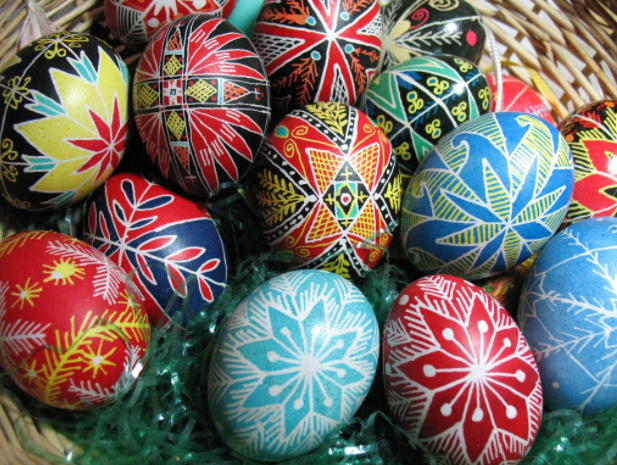My favorite Ukrainian holidays
May 24, 2021
As a Ukrainian-American, my family has tried to keep up traditions and celebrate Ukrainian holidays even while living here in California. Here are some of my favorites.
Easter has passed for many people, but for those practicing religions that still use the old Julian calendar (not the Gregorian), Easter is coming up on May 2! My favorite part of Ukrainian Easter is the eggs and the food. We take Easter egg-painting very seriously, with our traditional technique pysankarstvo (meaning “to write”). This centuries-old art form involves tools that allow us to draw on the egg with melted beeswax and then dip them in dyes, thus leaving a protective layer of color where the wax is. The food we eat for Easter is also amazing, in my humble opinion, including a sweet bread called paska, lots of eggs, sausages, cheeses, salads, and ham.
My next favorite Ukrainian holiday on the calendar year is Ivana Kupala, falling around the summer solstice. This holiday has pagan roots but Ukrainians have continued many of the traditions even after Christianity was adopted. The holiday is rooted in a slightly strange folk tale/myth about two young lovers who face a very Romeo and Juliet-esque ending. We honor this story by creating a hay “Ivan”, whom we burn and jump over the fire, and a hay “Maryna”, whom we drown to recreate the story (very morbid, I know). Traditionally, there are rituals with water, fire and herbs. The girls braid flower wreaths to throw in the river for guys to fish out, and whoever’s wreath they catch will be a pair. Obviously, this holiday has roots in the old days when girls were expected to find husbands early, but we still like to practice it for fun.
Next, we have Saint Nicholas Day and Christmas, called (Rizdvo, or “birth”), which yes, are two different holidays. First, we receive gifts from Saint Nicholas on the night of December 19, and then celebrate the birth of Christ on January 7 with an impressive 12-meal dinner. The twelve meals represent the Apostles, of course, and a myriad of other symbols surround the table. Dinner is served when you see the first star outside (representing the star of Bethlehem), and you can find pieces of garlic under each corner of the tablecloth to protect the family from evil spirits, hay under the table to remind us of Christ’s birth in the manger, and an empty setting at the table for the ancestors to celebrate with us. The meal is completely vegan (except fish) and includes such dishes as beet soup and kutya, a sweet grain dish, to name a few.
And finally, our New Year, Malanka, is celebrated on January 13, meaning our Christmas season lasts about a month. Malanka includes caroling and a formal banquet and party. It is the time to wish prosperity for the upcoming year, in the form of carols called shedrivky.
Ukrainian holidays are all about celebrating good fortune, beauty, and joy of living, and I’m so proud that my family continues to celebrate.


